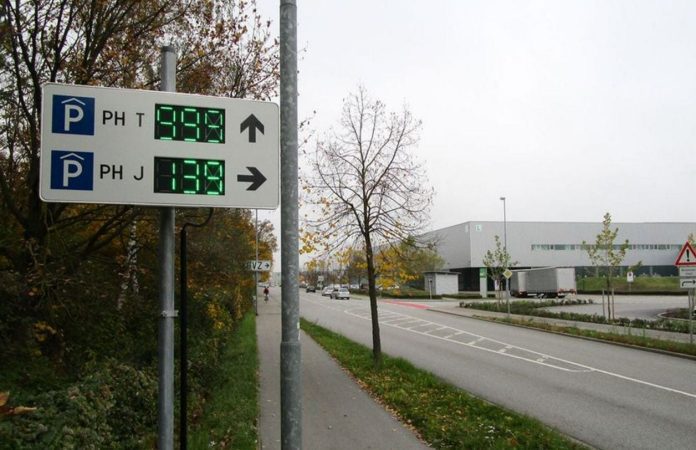See how smart parking is being used in the U.S., China Germany
Smart parking has emerged as a major IoT use case, perhaps for a number of reasons. First off, the technology components aren’t that difficult or complex in terms of deployment and management. It also helps do away with vehicles circling for spaces, which adds to traffic congestion and creates unnecessary carbon emissions and other pollutants; it also wastes gas. And, perhaps the real reason we’ve seen so much interest, it helps address a constant source of frustration faced by urban commuters and other motorists, so, as is the goal of this type of smart city project, smart parking uses technology to directly improve quality-of-life.
I remember my first experience with what, when compared to some of the solutions available today, is a rudimentary for of smart parking. When I moved to Austin, Texas, in 2014, my wife and I enjoyed shopping at the Whole Foods headquarters, a showpiece store in the heart of a bustling downtown. When you enter the garage an easily visible red and green lights let you know from a great distance where there are available spaces. This is as simple as attaching a motion sensor to a two-function light and a battery, but saves so much time. Now, there are applications that will guide you to the nearest available space and seamlessly withdraw payment from a securely integrated debit card.
At the University of North Carolina in Charlotte, the Parking and Transportation Services (PaTS) department has partnered with NuPark to use license plate recognition to make for a smoother process of parking permit verification, and also to “gather parking occupancy and utilization analytics,” according to the parties. The license plate recognition tech “will allow PaTS to increase the flexibility, efficiency and availability of parking on campus.” UNC Charlotte PaTS Director Doug Lape said plate reading technology “is becoming popular for institutional use across the country as the technology becomes a more reliable, cost-effective solution.”
NuPark recently unveiled a cloud-based smart parking management platform dubbed Scout that allows parking professionals to gain greater efficiency, access, and better visibility into their parking operations. The Scout platform combines a highly configurable interface with real-time visual monitoring and analytics. The platform integrates new capabilities including a redesigned HTML5-based user interface and new dashboards, which provide graphic representations of parking information.
Last year Chinese vendor Huawei and U.K-based telecoms group Vodafone completed the first trial on commercial networks for pre-standard NB-IoT smart parking in Spain, which built on earlier partnership that tested out NB-IoT for smart utility metering. The smart parking trial, which was carried out in collaboration with Fangle and Ublox, covered various indoor parking spots. Huawei said that smart parking will allow users to access parking data remotely, from mobile application, including checking parking spot availability and navigating to the available spots, among other features. The Chinese vendor also said that the solution will create new revenue streams for municipal management, lower public parking running costs, as well as helping to alleviate traffic congestion.
“With the NB-IoT Open Lab in the U.K established, Huawei is committed to working closely with Vodafone to expand the NB-IoT ecosystem and develop more innovative solutions, such as Smart Metering and now Smart Parking, to fully support the industry and partners to embrace the opportunities NB-IoT will bring,” David Wang, President of Wireless Product Line at Huawei said.
Audi’s Ingolstadt, Germany, factory is its largest and the second largest in Europe, producing 566,646 cars in 2015. It is where the auto manufacturer produces its A3, A4, A5, Q2 and Q5 models and is considered by the company as its “most important location.” The site covers an area of more than 2,700,000 square meters – equivalent to more than 300 soccer pitches, and houses 43,192 employees. All of those employees must find parking in a growing lot of more than 5,000 spaces encompassing an area of 830,000 square meters. According to a case study, Audi turned to Urbiotica, a Spanish company founded on wireless sensor networks, to create a smart parking lot to reduce congestion and create a more efficient work environment.
Urbiotica’s proposal was to install 22 wireless parking capacity sensors to detect vehicles entering and leaving each parking sector in order to communicate free spaces in each area and guide vehicles to them. Because the lot had a limited number of entrances and exits, the project could be deployed with 22 sensors for 5,000 spaces. The wireless sensors count the number of vehicles that enter and leave each parking area, and based on the total number of spaces defined, occupancy data is calculated and sent in real-time to digital panels located at entry points. The goal is to help guide drivers to areas with free spaces.
The smart parking solution uses three elements, including a sensing system, data transmission elements and software management platform. According to the Spanish company, the smart parking solution offers four main benefits, including greater rotation and occupancy of car park; reduction in traffic flow produced by looking for parking; increased worker and visitor satisfaction and experience; and improved environmental quality.

